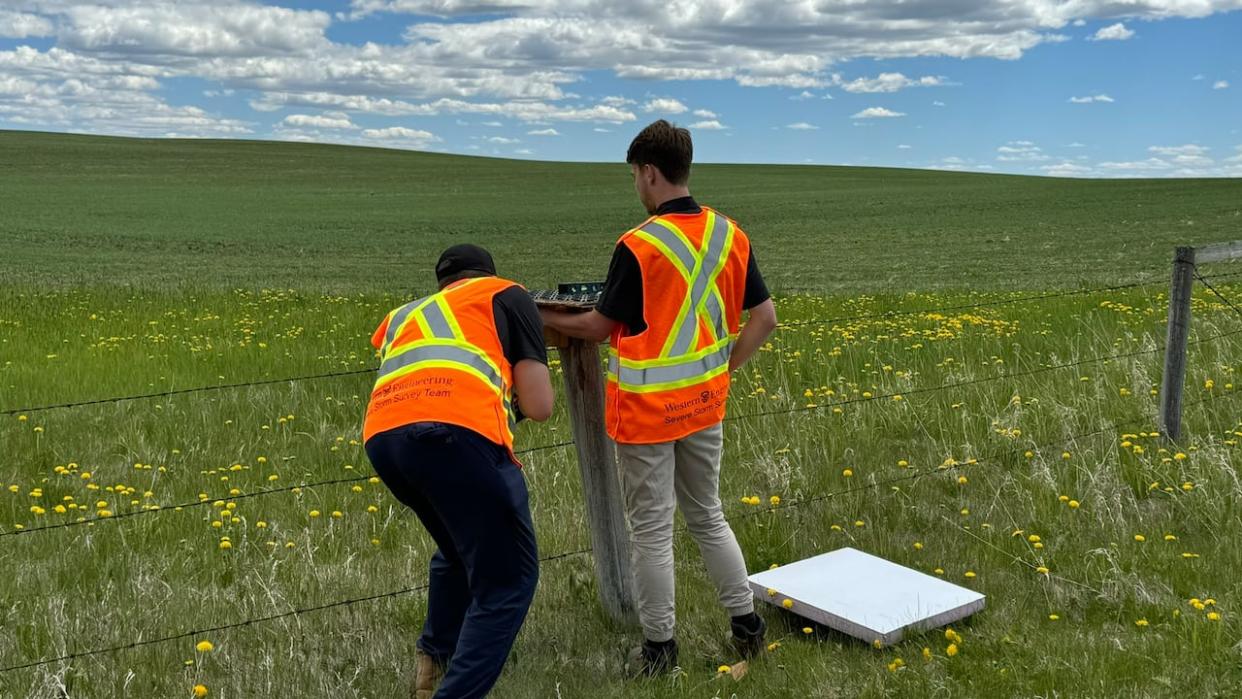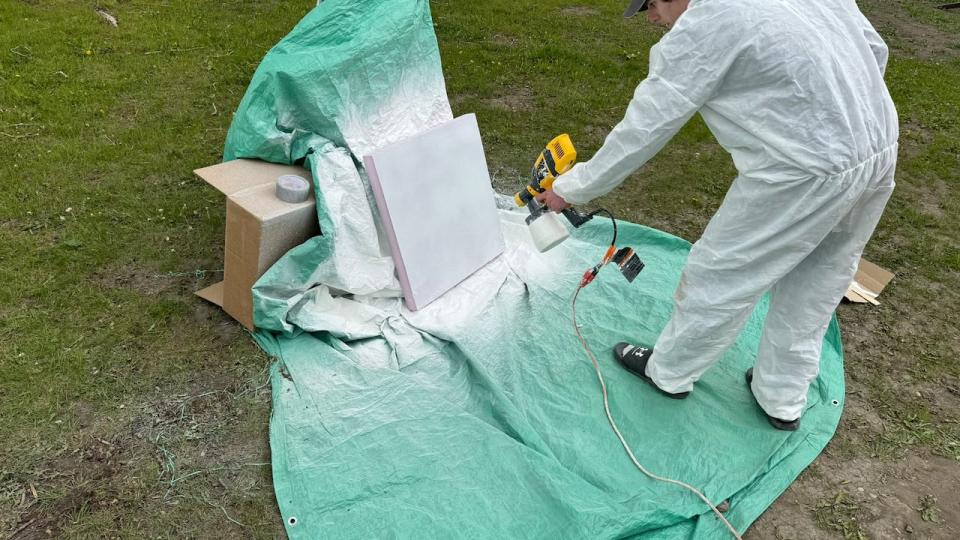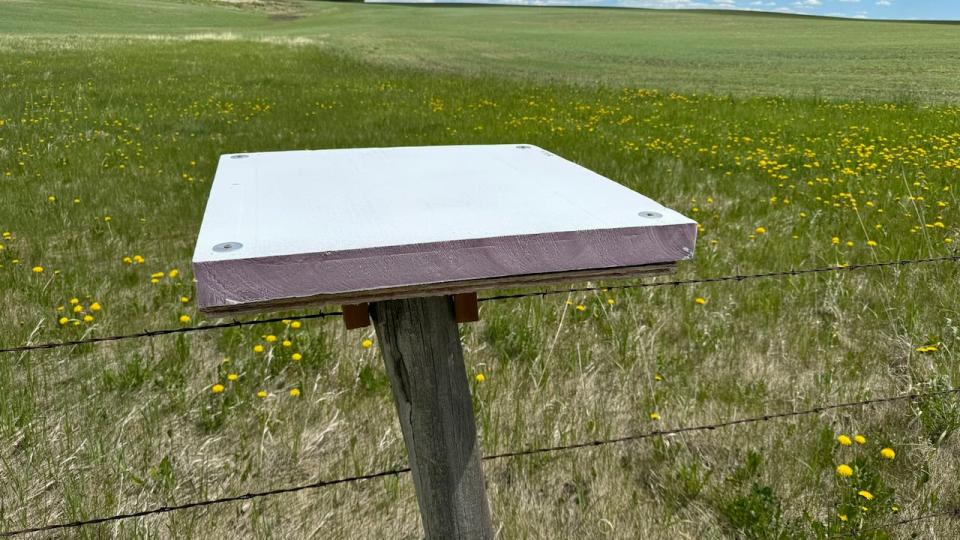Hailstorm researchers aiming to take a dent out of pricey insurance claims

Southern Alberta can be a hotbed of weather activity, but an Ontario-based research project hopes to understand hail better, to strengthen forecasts and warnings and take a dent out of those pricey insurance claims.
"We've got a lot planned," Julian Brimelow told the Calgary Eyeopener this week.
"It's going to be one of our busiest seasons."
Brimelow is the executive director of the Northern Hail Project, based out of Western University in London, Ont., and now in its third year.
He says expanding the scope is a numbers game.

This hail pad will soon be installed in southern Alberta to measure and help mitigate hail damage. (@NHP_field/X)
"This means we will be deploying more equipment, investigating hopefully more storms, and collecting more valuable data to improve our understanding of hailstorms."
In addition to about 20 sensor stations in and around Calgary, Brimelow says data is collected at many sites north of the city as well.
"We also have a hail pad network. This is a static network deployed in hail alley. It extends about 75 kilometres, from just south of Caroline, Alberta, all the way down to just north of Cochrane. Those 40 hail pads are very sensitive to hail impacts," he explained.
The idea is to better understand the number of storms and how big they are.
"We are also flying multiple drones with specialized cameras that fly behind hailstorms monitoring impact on crop health and infrastructure," he said.
The project involves three teams.
"We have a storm intercept or hail swath team. We have a UAV (unmanned aerial vehicle) team, and we have a damage-survey team."

This hail pad is one tool researchers are using to measure damage from hailstorms. (@NHP_field/X)
The hail season in Alberta starts in early June, peaks in July and tapers off in August, Brimelow said.
"We are also trying to develop a climatology for hail. If you are in the city of Calgary and are trying to design and build a hail-resilient neighbourhood, for example, you [currently] don't have access to reliable hail climatology data. We are hoping to develop that for Canada."
He says this is about giving people information they can use to reduce impacts.
"Obviously you can't move your house, but you can move your vehicle. You can bring some of that garden furniture inside, you might be able to cover your plants. Things like that."
Northeast Calgary experienced Canada's most costly hailstorm in June 2020. About 70,000 insurance claims were filed costing roughly $1.4 billion.
"It actually can amount to a lot of money saved. During the Calgary hailstorm, a good chunk of that was vehicle damage. We may in the future be able to reduce the impact."


